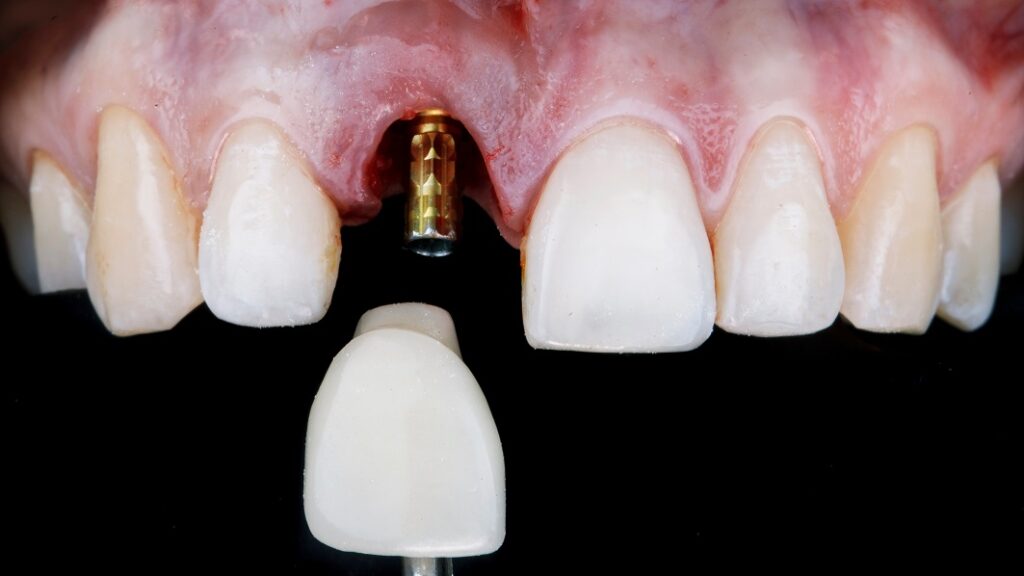Losing a tooth isn’t simply about having an empty spot in your mouth. It’s much more than that. This gap can mess with the way you talk and chew your food. Even more, it can cause your other teeth to move around in ways they shouldn’t, which can mess with your bite. That’s why it’s super important to think about whether a dental implant or a bridge is the best way to fill that space. It’s not just for the here and now—it’s a decision that will stick with you, affecting not only your oral health but also how you feel about your smile. Here at Smile Science Dental Spa, we get that this is a big choice, and we’re all about giving you the info you need to pick what’s right for you.
Understanding Tooth Loss

Think about tooth loss like knocking over the first domino in a long line. Once that first tooth is gone, it doesn’t stop there. The other teeth might start to lean and shift into the new space, which isn’t good. They’re supposed to stay in their own lanes, so to speak. This can lead to bites not matching up anymore, which can make it tricky to chew or even cause discomfort.
But there’s more. Your jawbone likes to be used—it stays strong when your teeth give it a good workout by chewing. When a tooth is missing, that part of the jawbone gets a little lazy because it’s not being worked out anymore. This can lead to the bone getting weaker over time, which is a big no-no for keeping a healthy mouth.
Plus, let’s talk about confidence. Your smile is like your personal welcome sign. It’s one of the first things people notice. Missing teeth might make you want to smile less, and that can be a real downer. It’s not just about looking good; it’s about feeling good, too.
With all these things in mind, it’s clear why figuring out the best way to fill that gap—the choice between a dental implant or a bridge—is super important. It’s about keeping the rest of your teeth in line, making sure your jawbone stays tough, and keeping you smiling big and bright.
What is a Dental Implant?

Picture this: you get a new tooth that’s just for you, made to fit perfectly in the spot where your old tooth used to be. But this isn’t just any replacement—it’s a dental implant, and it’s like a superhero for your mouth. Dental implants are these awesome little anchors made of metal, usually titanium, which is a material your body gets along with really well. They go right into your jawbone, standing strong like the roots of your natural teeth.
Once an implant is in place, it gets topped off with a crown—this is the part that looks like a tooth, and boy does it look real. You might forget it’s even a replacement because it blends in with your other teeth so well. And here’s the kicker: these implants are tough. They can handle all the crunchy, chewy foods you love, and they’re in it for the long haul—they can stick with you for life if you take good care of them. That’s what makes them a favorite for many people looking at tooth replacement options.
What is a Dental Bridge?
Now, let’s shift gears and talk about dental bridges. A dental bridge is like a tooth team-up. It uses the power of your existing teeth to hold a false tooth in place. It’s like when you hold hands to form a chain with your friends; your teeth do something similar to fill in the gap.
Here’s how it works: The false tooth, called a pontic, is held in place by dental crowns that go on top of the teeth on either side of the empty space. These anchor teeth are like the strong legs of a bridge over a river—they support the middle part so cars, or in this case, the pontic, can stay put.
Getting a bridge is generally a quicker process than getting an implant. There’s no surgery needed to put it into the bone, so it’s less hassle. Plus, if your budget is tight, a bridge might make you breathe a sigh of relief because it’s usually more wallet-friendly. But remember, even though they’re quicker and cheaper, bridges don’t have the same bone-supporting superpowers that implants do, and they might need to be replaced after a while. It’s all about what works best for you and your smile.
Comparing Dental Implant and Bridge
When it’s time to choose how to replace a missing tooth, it’s a bit like deciding on the right outfit for a special occasion. You could go for the tailor-made suit that’s measured to fit you perfectly—this is your dental implant. It’s crafted just for your mouth, and it’s meant to last a lifetime. A dental implant is sturdy, keeps your jawbone healthy, and looks just like your natural teeth. It’s a top-notch choice for long-term health and happiness.
On the flip side, a dental bridge is like picking out a suit that’s ready to wear. It’s faster, easier, and doesn’t require as many appointments or healing time. A bridge can quickly restore your smile and is less expensive upfront. It can look great and work well for a good stretch of time. But, just like a ready-made suit, it might need some adjustments or replacements in the future.
The Procedure: Dental Implant vs Bridge
Let’s dive into what it actually feels like to get these procedures done. If you’re leaning towards a dental implant, get ready for a journey. It’s not a one-and-done kind of deal. First, your dentist places the implant into your jawbone. You’ll need to heal up after this part, which can take a few months. But don’t worry, you won’t be toothless—you can have a temporary cover that keeps your smile looking good. Once you’re all healed, the dentist puts on the crown, and voilà, your new tooth is ready to chow down on your favorite foods.
If you’re thinking a bridge is more your style, you’ll be in and out much faster. Your dentist gets the teeth on either side of the gap ready to support the bridge. Then, they take a mold, and a lab creates the bridge. When it’s ready, your dentist cements the bridge in place, and you’re set to go. It’s simpler and doesn’t involve major surgery, which can be a big plus for many folks.
Deciding between a dental implant or a bridge is a personal choice, and there’s no one-size-fits-all answer. It’s all about what fits your needs, your lifestyle, and your budget. And remember, whether you choose the tailor-made experience of an implant or the quick turnaround of a bridge, both will get you back to smiling with confidence.
Durability and Longevity
When you’re looking at how long these tooth replacement options will last, dental implants are the clear frontrunners. They’re like those marathon runners who train to keep going for the long haul. Once an implant is set into your jawbone, it’s there to stay. Your body’s bone actually grows around the implant, locking it in place – a process we call “osseointegration.” This is a fancy way of saying that the implant becomes a solid part of your mouth. With the proper care, dental implants can last for decades, often the rest of your life. That’s a lot of smiles and a lot of meals enjoyed without worry.
Bridges, in comparison, are more like your sprinters. They start strong and give you a quick return to functionality and aesthetics after tooth loss. However, even though they are built to last, they don’t quite go the distance like implants do. The average lifespan of a dental bridge is between 5 to 15 years. They may need maintenance or replacement as time goes by due to the wear and tear of everyday use, or from changes in the structure of the supporting teeth or gums.
Cost Considerations
Let’s talk dollars and cents. When it comes to cost, dental implants tend to make you open your wallet a bit wider initially. They require more specialized work and the materials themselves are more costly. Plus, the process involves surgery and a healing period that might require additional items like temporary prosthetics or follow-up visits.
But before you get sticker shock, consider the long game. Dental implants can be a one-time cost for a lifetime of use. There’s value in not having to worry about your tooth replacement for decades, if at all ever again. In the long run, they can be the more economical choice when you factor in the potential replacement and maintenance costs for bridges.
Now, if you’re budget-conscious and need a more affordable option now, dental bridges may be more appealing. They are generally less expensive right out of the gate since the procedure is less involved and the materials are less costly. But remember to factor in future costs – since bridges may need to be replaced or repaired, the initial savings may balance out over time.
So, when you’re weighing the options of a dental implant or bridge, think about how long you want your replacement tooth to last and how much you’re willing to invest upfront versus over time. It’s a decision that’s not just about your smile now, but also about your smile years down the road.
Maintenance and Care
Whether you decide on a dental implant or a bridge, taking care of them is crucial for their longevity and your oral health. Dental implants pride themselves on being low maintenance. Treat them like you would your natural teeth – regular brushing twice a day and flossing daily is essential. The bonus is, there’s no need for any special cleaners or tools. Just a good routine with your regular toothbrush, dental floss, and perhaps an interdental brush to keep that smile shining.
Bridges call for a tad more attention. Because a bridge is connected to natural teeth, there’s a nook underneath that’s a hot spot for food particles and plaque. You’ll need to be a bit of a dental ninja with your flossing technique. Special flosses or interdental brushes are your best friends here, helping you to clean underneath the pontic, which is the part of the bridge that replaces the missing tooth. It might take a bit of practice, but keeping your bridge clean is a big part of making sure it stays in tip-top shape.
Aesthetic and Functional Outcomes
When we talk about how these options look and work, dental implants are the gold standard. They mimic your natural teeth so closely that even you might forget which tooth is the implant after a while. They’re matched in color to your other teeth and are designed to fit perfectly in the spot your old tooth used to be. When you bite down or flash a smile, nobody will be the wiser – it’s all seamless.
Bridges also do a stand-up job in the looks department. They’re made to blend in with your existing teeth in shape and color. The difference is, with a bridge, you might have to be a little bit more thoughtful about what you eat. Sticky or very hard foods can be a challenge, as they can put pressure on the bridge and cause issues over time.
So, keeping your new dental work in great shape means sticking to a good hygiene routine. With implants, it’s business as usual with brushing and flossing, while bridges need that bit of extra care. And when it comes to smiling for the camera or enjoying your favorite foods, both implants and bridges are there to make sure you do so with confidence and comfort.






